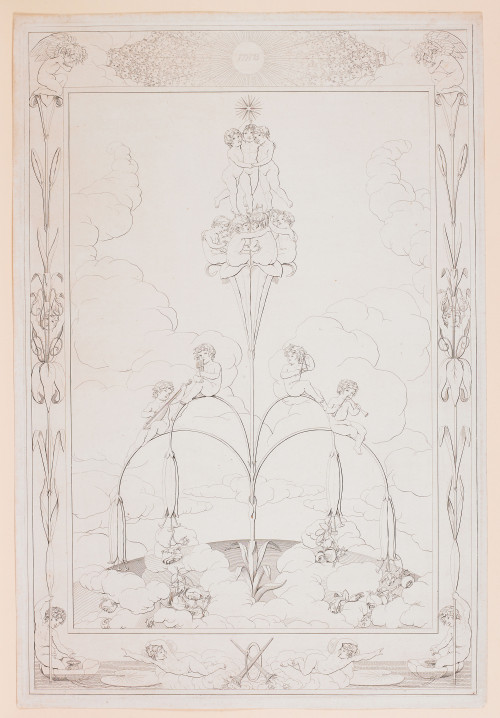Philipp Otto Runge called his four drawings Morning and Evening, Day and Night. He had composed these complements “like a symphony”. The cycle was printed in an edition of 25 copies in 1805. One of the copies belonged to Bettine von Arnim. A second, much larger edition came out in 1807. The Times of Day caused a stir and became a topic of widespread discussion.
Philipp Otto Runge was born in Wolgast on the Baltic Sea in 1777. As a young commercial apprentice in Hamburg, he furthered his classical education on the side and became acquainted with Early Romantic ideas. Picking up the thread of his early instruction in drawing, he went to Copenhagen in 1799 to study at the art academy there. In 1801, he made the acquaintance of the painter Caspar David Friedrich in Greifswald. The two artists met again in Dresden, where Runge lived until 1804. It was likewise in 1801 that his close friendship with Ludwig Tieck began. Tieck had a deep understanding of what was so novel about Runge’s art. He was especially impressed with the Times of Day.
Each of the four drawings consists of a main image with a drawn frame and depicts a landscape with plants and figures of children. A lily ascending to Venus characterizes the morning; a woman wearing a wide, star-studded cloak the evening, a bower with figures of a woman and children the day, and a female figure with a poppy flower fan the night. The drawings were inspired by ornamental forms such as the arabesque. Whereas at first Runge had merely been thinking of “room decorations”, his plan gradually expanded to where it fit the definition of a Romantic synthesis of the arts. He envisaged an “abstract, picturesque, fantastical, musical poem with choirs,” a “composition for all three arts collectively”. The Times of Day were first drawn, then, printed, then painted, and ultimately came to decorate a room created especially for that purpose. Texts and music were to be heard there. His vision of the room had been inspired by a visit to Meissen Cathedral: “A building came to mind for my pictures.” Colour and light, architecture, poetry, and music, were to unite to offer the audience the experience of a universal artwork. The artist’s untimely death in 1810 prevented the continuation of the revolutionary project. But Philipp Otto Runge’s ideas are still relevant today.
